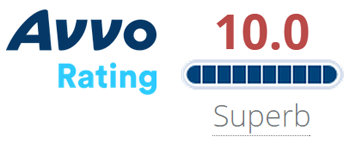Newsletter US Immigration Update March 2005
Volume Ten, Number Three
 SHUSTERMAN’S IMMIGRATION UPDATE is the Web’s most popular e-mail newsletter regarding U.S. immigration laws and procedures with over 40,000 subscribers located in more than 150 countries. It is written by a former INS Trial Attorney (1976-82) with over 30 years of experience practicing immigration law.
SHUSTERMAN’S IMMIGRATION UPDATE is the Web’s most popular e-mail newsletter regarding U.S. immigration laws and procedures with over 40,000 subscribers located in more than 150 countries. It is written by a former INS Trial Attorney (1976-82) with over 30 years of experience practicing immigration law.
Published by the Law Offices of Carl Shusterman, 600 Wilshire Blvd, Suite 1550, Los Angeles, California, 90017. Phone: (213) 623-4592 x0.
Subscribe to our E-Mail Newsletter, join the conversation on our Immigration Facebook Page, follow our Blog Posts and subscribe to our “How-To” Immigration Videos
Client Reviews

Very Efficient and Professional!
“I would like to thank the team of Carl Shusterman’s Office who took care of my application for naturalization. Everything went well and very fast! Very efficient and professional!”
– Jennie Kil, San Francisco, CA
Read More Reviews
Zoom Consultations Available!
Newsletter US Immigration Update March 2005
TABLE OF CONTENTS:
- PERM: A Guide for Non-Lawyers & Strategies for Success
- Immigration Government Processing Times
- Legislation: House Passes the “Real ID Act of 2005”
- Retrogression: Studying the Past to Predict the Future
- Immigration Trivia Quiz: “And the Winner Is…?”
- Bush’s Immigration Plans: Straight Talk vs. Word Play
- Success Story: How a Cancer Research Got O-1 Status
- Schedule of Upcoming Immigration Law Seminars
- Chat Schedule, Transcripts, Audios & Videos
- Winner of the February 2005 Immigration Trivia Quiz
CAREER OPPORTUNITIES
The Law Offices of Carl Shusterman are seeking the services of a legal assistant.
Our ideal candidate must have experience in the immigration of registered nurses and in family immigration. We are looking for a seasoned professional with excellent verbal and writing skills, someone who is friendly, detail-oriented and a team player.
Salaries are commensurate with experience and ability. Our benefits package is second to none.
Send your resume, references and writing samples to Elsa Garcia ategarcia@shusterman.com.
NEWS FLASHES:
- Asylum– On February 28, the Department of State issued both its “2004 Country Reports on Human Right Practices”. This report is especially helpful in the preparation of Requests for Asylum, Withholding of Removal, applications made under the Convention Against Torture (CAT) and for immigration benefits where hardship is a factor. It should be read in conjunction with similar reports published by private organizations like Amnesty International and Human Rights Watch. We link to all of these reports from our “Asylum” page at
- Business Immigration Newsletter – Periodically, the American Immigration Lawyers Association (AILA) publishes “Connect!” a newsletter devoted to business-related immigration developments. We link to this newsletter from toc-busimm.html (Link is no longer operational.)
- Cabinet Secretaries Sworn-In– During the month of February, the following new cabinet members were confirmed by the Senate and sworn- in: Michael Chertoff, Secretary of the Department of Homeland Security (DHS). See
http://www.dhs.gov/michael-chertoff-homeland-security-secretary-2005-2009
and Alberto Gonzales, Attorney General. See
- H-1B – Starting on March 8, section 425 of the H-1B Visa Reform Act of 2004 modifies INA sec. 214(g)(5) to exempt up to 20,000 persons per fiscal year from the 65,000 numerical cap. To qualify, persons must have earned a Master’s or higher degree from a U.S. institution of higher education. This would seem to mean the education of the alien controls who is eligible rather than the requirements for the job. CIS has yet to issue a policy memorandum explaining how the agency plans to implement the new law.
- Illegal Immigrants– On February 28, the Orange County Register published an interview of the Chairman of the Senate Immigration Subcommittee John Cornyn (R-TX) by reporter Dena Bunis. Senator Cornyn had a lot of interesting things to say about how the government should deal with the 10 million illegal immigrants in the U.S. “Doing nothing is not an option”, he concluded.
- Poverty Income Guidelines– The Department of Health and Human Services (HHS) has published its new poverty income guidelines. Persons filing Affidavits of Support (Form I-864) must show that their household income is at least 125% of the current poverty income guidelines according to the number of persons in their household. For Affidavit of Support purposes, the new guidelines are effective as of April 1, 2005. Our site lists the annual HHS Poverty Income Guidelines from 1996 to 2005. See our “Affidavit of Support” page at
- RFE/NOID Memo– On February 16, 2005, the CIS issued a new memo in place of their RFE memo issued on May 4, 2004. The focus of the previous memo was to stem the flow of RFEs by informing examiners of those instances when they could either grant or deny a petition/application without the necessity of issuing an RFE. The unintended consequence of last year’s memo was that many applications and petitions were denied when the reason for the denial could have been cured if the examiner had issued an RFE. The new memo is helpful since it clearly delineates when an examiner should issue a Request for Evidence (RFE), when a Notice of Intent to Deny (NOID) is appropriate, and when neither is necessary.
- Washington Update – Periodically, the American Immigration Lawyers Association (AILA) publishes its “Washington Update” which brings readers the most up-to-date news about legislation, regulations, congressional hearings and other immigration-related developments from inside the Beltway. We link to “Washington Update” from toc-advocacy.htm (Link is no longer operational.)
1. PERM: A Guide for Non-Lawyers & Strategies for Success
- What does PERM stand for, and when does it go into effect?PERM stands for “Program Electronic Review Management”. It will replace the current alien certification system (both regular and RIR) on March 28, 2005.
- Why is PERM important? PERM is the biggest change in employment-based immigration in 40 years. If it works as planned, it will reduce the time it takes to obtain the approval of an alien labor certification from two to three years to just 45-60 days.
- Why is this important since it can take the Immigration Service two to three years to approve an application for adjustment of status?Good point. However, for some persons, PERM will be a very “big deal” even if CIS processing times are not significantly reduced. For example, if you graduate from a university in the U.S. with a Bachelors, Masters or Doctorate degree, you can apply for a one-year work permit (known as OPT – Optional Practical Training). Currently, you should change your status from OPT to H-1B before even thinking about permanent residence. With the H-1B cap being reached on the first day of the fiscal year, you may have to apply for an H-1B very early on during your OPT period. Otherwise, the H-1B cap may be reached, and you may fall out of legal status. However, as soon as PERM is implemented on March 28, you have another option. You can apply for PERM while you are still on OPT, and skip the H-1B process, thereby saving yourself a lot of hassle, and thousands of dollars in both attorney and government filing fees.
- Since PERM is so fast, can it be used by B-2 visitors, F-1 students, J exchange visitors, etc.?Definitely. Even if the government reduces the number of H-1Bs and other types of working visas to zero, it will still be possible for visitors, students and other nonimmigrants to obtain PERM approval, and then immediately apply for combined processing (I-140/I-485/I- 765/I-131) and get a work permit within six months.
- Suppose the Labor Department doesn’t make good on its pledge to decide PERM applications within 45-60 days? No reason to worry. Under section 245k, as long as you are not out of legal status for more than 180 days since your latest admission to the U.S., you can still adjust status if you are adjusting your status under EB-1, EB-2 or EB-3.
- Won’t PERM be a disaster for employers, since if DOL approves the labor certification in 45-60 days and the combined processing application is immediately submitted to CIS, the employee is free to transfer to another employer after 180 days?Possibly, but this primarily applies to abusive employers. For as long as I can remember, certain employers would stretch out both the labor certification and the adjustment of status process, just so the employee could not change jobs. Now, the shoe is on the other foot. Most of the employees that we adjust stay with their sponsoring employers for many years.
- Is there any conceivable reason to submit a labor certification before March 28?Yes, I sure that there are a lot of reasons to do so. However, one particular reason instantly springs to mind. You are nearing the beginning of your 6th and final year in H-1B status and, for whatever reason; you are not ready to apply for PERM. Perhaps you are an accountant or an attorney, and there is no way to prove that your job is in short supply. Submitting a regular labor certification ensures that it will be years before DOL even looks at your application. In the meantime, once your application has been pending for over one year, you become eligible for an indefinite number of extensions of your H-1B status. This strategy may buy you enough time to win the DV lottery or to fall in love, hopefully with a U.S. citizen. Or maybe the U.S. will experience a shortage of attorneys ;-)
- PERM largely eliminates the State Workforce Agencies (SWAs) from the labor certification process. However, employers still must obtain a Prevailing Wage Determination (PWD) from the SWA where the job is located. Is there a standard form under PERM for requesting a PWD?Of course not! Each state has its own form.
2. Immigration Government Processing Times
 We link to the most recent immigration waiting times for each of the four USCIS Service Centers, the National Benefits Center and the Administrative Appeals Office. We also link to the processing times of all of the 83 USCIS District Offices and Sub-offices. We link to the Labor Department’s page entitled “Processing dates for labor certification applications”. Finally, we link to the State Department’s “Visa Wait Times” page.
We link to the most recent immigration waiting times for each of the four USCIS Service Centers, the National Benefits Center and the Administrative Appeals Office. We also link to the processing times of all of the 83 USCIS District Offices and Sub-offices. We link to the Labor Department’s page entitled “Processing dates for labor certification applications”. Finally, we link to the State Department’s “Visa Wait Times” page.
3. Legislation: House Passes the “Real ID Act of 2005”
On February 10, the House of Representatives passed H.R.418, the “REAL ID Act of 2005” by a vote of 261 to 161. To learn how your congressional representative voted, see
http://clerk.house.gov/evs/2005/roll031.xml
The bill now goes to the Senate where its fate is far from clear.
The measure was rejected by Congress and the White House in December as part of a bill reorganizing intelligence agencies in response to flaws found after the September 11, 2001 terrorism attacks. It was revived in 2005 with newly won support from the Bush administration.
Sponsored by House Judiciary Chairman James Sensenbrenner (R-OH) and over 100 other co-sponsors, almost all of them Republicans, the bill would:
- Establish Federal standards for state driver’s licenses
- Make it more difficult to gain asylum in the U.S.
- Eliminate the 10,000 annual quota on asylee adjustments
- Make it easier to remove a person from the U.S. as a terrorist
- Mandate the completion of a border fence between San Diego and Mexico
The bill is extremely controversial with supporters stating that is essential to national security while opponents object that it sets the stage for a national ID card and enables the government to deport legitimate asylum seekers to countries where they may be persecuted or even killed.
Presently, numerous states (Hawaii, Maryland, Michigan, Montana, New Mexico, North Carolina, Oregon, Tennessee, Utah, Washington and Wisconsin) issue drivers licenses to persons without requiring them to prove that they are legal immigrants. The bill gives states three years to comply with federal standards in issuing driver’s licenses. Unless a state verifies that a person is legally present in the U.S. before issuing a driver’s license, the license can not be used for federal identification (e.g., entering federal buildings, opening bank accounts, boarding airplanes, etc.). Federal standards would include a requirement that licenses contain a digital photograph, anti-counterfeiting features and machine-readable technology. States would be required to demand proof of the person’s Social Security number and confirm that number with the Social Security Administration.
Chairman Sensenbrenner complains that today there are over 350 valid driver’s license designs issued by the 50 states. We all know it’s very difficult for security officials at airports to tell the real ID cards from the counterfeit ones.
Most Democrats and even some Republicans strenuously object to the driver’s license provision. Representative Ron Paul (R-TX) states that this is tantamount to a national ID card since “if a state opts out, nobody is going to accept their driver’s licenses.”
Other opponents argue that it only makes sense for drivers to be registered with state departments of motor vehicles and to be insured.
The Congressional Budget Office estimated the bill would cost local, state and tribal governments $120 million over the next five years to implement.
Regarding the tougher standards for gaining asylum, supporters of the bill maintain that they are necessary to keep terrorists from obtaining asylum, and preventing Federal Judges from overruling asylum denials where an Immigration Judge has ruled that a person is not a credible witness.
The American Immigration Lawyers Association (AILA) counters that terrorists are already ineligible to obtain asylee. AILA states that H.R.418 “would deny asylum to legitimate applicants who cannot prove the central motive of their persecutor, who cannot produce corroborating evidence of their account, who provide inconsistent testimony on minor facts irrelevant to their claim, or whose demeanor is inconsistent with an immigration judge’s preconceived expectations.”
The Court of Appeals for the Ninth Circuit has overturned numerous decisions of Immigration Judges where an asylum applicant was ruled not credible due to small discrepancies in dates, places and other factors not central to the asylum claim.
There is little or no controversy about a provision in the bill which would eliminate the cap on the number of asylees who could adjust status annually.
Much more controversial is a provision of the bill which would make a person removable if they had contributed money to an organization which is later declared to be a terrorist group. For example, Attorney General Ashcroft supported groups in Afghanistan which were later declared to be terrorist organizations. If Mr. Ashcroft were a lawful permanent resident of the U.S. and had contributed money to such a group, he could be deported for this act years later if the group was later added to the list of terrorist organizations.
Another controversial provision would restrict habeas corpus review over detention and removal orders and would remove temporary stays of removal pending judicial review.
Finally, there is the provision that would allow completion of a controversial triple-fencing project along the U.S.-Mexico border near Imperial Beach south of San Diego without complying with state or federal environmental safeguards.
Two San Diego Congressmen hold diametrically opposed views concerning this issue. Duncan Hunter (R-CA), the Chairman of the House Armed Service Committee states: “We need to get this thing done, and we need to do it for security reasons, and at some point we just need to do it.” However, Representative Bob Filner (D-CA), in whose district the fence would be located, sees the issue far differently: “The waiving of all environmental rules for this is just criminal. It’s just too extensive a trade-off for the limited security advantage.” Last February, the California Coastal Commission voted unanimously to oppose the project as planned by the U.S. Border Patrol, ruling that it was more harmful than necessary to the environment.
Opponents of H.R. 418 question the legitimacy of passing such a significant piece of legislation in the absence of legislative hearings.
Senators from both parties have expressed serious reservations about approving H.R.418. Others have indicated that they will consider such legislation only within the context of broader reforms to the immigration system.
We also link to AILA’s “Brief Summary of REAL ID Act Provisions” at
http://www.aila.org/contentViewer.aspx?bc=10,911,5516,8782 (Link is no longer operational)
4. Retrogression: Studying the Past to Predict the Future
Why did the EB-3 category retrogress three years in January for persons born in India, China and the Philippines? Will the retrogression spread like a virus to other categories and other countries? Already, the EB-3 category for unskilled workers for all countries retrogressed to July 1, 2001 creating a backlog of almost four years. See
https://www.shusterman.com/statedepartmentvisabulletin/
Clues to the future of retrogression may be found be carefully examining the retrogression of 2000.
The last time that the employment-based (EB) numbers retrogressed was at the height of the dotcom bubble in April 2000. Most of the EB-2 and EB-3 beneficiaries were computer programmers and systems analysts from China and India. In March 2000, both the EB-2 and EB-3 categories (with the exception of unskilled workers) were current for all countries. Suddenly, in April 2000, the numbers in both categories retrogressed for persons born in China and India.
The EB-3 category for both China and India backlogged over three years to January 1, 1997. At the same time, the EB-2 category regressed to July 1, 1997 for persons born in China and to January 1, 1999 for persons born in India.
However, the demand for visa numbers (or INS’s speed in granting applications for adjustment of status) was not as great as the State Department anticipated because by September 2000, the final month of the fiscal year, both categories returned to current.
This blissful situation did not last long. By October 2000, the backlogs had returned. However, this time, the EB-3 backlog for persons born in China was somewhat shorter than it had been in April, 2 1/2 years rather than 3 years. The India EB-3 quota backlogged with a vengeance to over 3 1/2 years. Similarly, the EB-2 numbers for China retrogressed, but only by 1 1/2 years, about half what the backlog had been in April. The EB-2 backlog for India regressed by 11 months.
By April 2001, as the dotcom fever had substantially abated and massive layoffs had occurred, the EB-2 backlogs shrunk to a few months each for both China and India. And by the end of the fiscal year, as the economy continued to sputter, both the EB-2 and EB-3 backlogs completely disappeared, even for unskilled workers.
What caused the backlogs to disappear in 2001? Although, it was partly the slowdown in the economy, it was also brought about by a provision in the “American Competitiveness in the 21st Century Act of 2000” (AC-21), enacted in October 2000, which allowed the “recapture” of 200,000 lost visa numbers.
This recapture provision allowed the U.S. to retain the best and the brightest of workers in the technology, computer and communications industries.
Today, with the H-1B quota reduced from 195,000 to 65,000 annually, the situation is somewhat different. The computer industry no longer takes most of the EB-2 and EB-3 numbers. Many of the petitioned workers are now teachers, physicians and health care professionals, especially registered nurses.
The numbers recaptured by AC-21 have largely run out to the detriment of our education and health care sectors. Our country shows no signs of being able to produce an adequate number of teachers, physicians and nurses, presently and in the next decade. However, the demand for these professions will increase geometrically.
Yet, because of immigration restrictions following the tragedy of September 11th, over 130,000 EB visas have been lost since 2001. The time is ripe to recapture these lost visas.
Congressional action is urgently required.
5. Immigration Trivia Quiz:
Quiz Removed.
6. Bush’s Immigration Plans: Straight Talk vs. Word Play
When President Bush first announced his guest worker/legalization plan in January 2004, we were impressed. At last, we had a President who understood that the solution to illegal immigration was economic and would not be solved solely by increased law enforcement.
When people are hungry and can not feed their families, doubling or tripling the size of the Border Patrol will not stop them from coming to the U.S. to find jobs.
Yet, more then a year after the President’s speech, there is still no Administration-endorsed legislation in Congress to implement the President’s vision. Is this because so many legislators in the President’s own party oppose his proposal?
The President briefly restated his immigration plan in his State of the Union speech on February 2, 2005:
“America’s immigration system is also outdated — unsuited to the needs of our economy and to the values of our country. We should not be content with laws that punish hardworking people who want only to provide for their families, and deny businesses willing workers, and invite chaos at our border. It is time for an immigration policy that permits temporary guest workers to fill jobs Americans will not take, that rejects amnesty, that tells us who is entering and leaving our country, and that closes the border to drug dealers and terrorists.” This time, we asked ourselves: “Noble words, but where’s the beef?”
This Administrative seems to play fast and lose with words. Just five days after the President’s speech, the Immigration Service posted a News Release on its website at
http://www.ilw.com/immigrationdaily/news/2005,0208-budget.pdf
entitled “USCIS Prioritizes Backlog Elimination in FY2006 Budget”. This news release contains the following paragraph:
“The President’s FY2006 budget will allow us to build upon the progress we have made in the past year to restore integrity and public confidence in America’s legal immigration system. We have successfully reduced the backlog to 1.5 million cases, down from a high of 3.8 million cases in January 2004…”
Oh, really?
If the backlog has been cut in half, why is the backlog for I-485s for employment-based applications over two years at the Texas Service Center? Why does it still take over three years to decide a NACARA adjustment in Texas? Please explain why CIS’ Phoenix office takes almost two years to adjudicate a family-based I-485 application? Each of these processing times was taken from the CIS website in February 2005.
Yet the agency claims that it has achieved a reduction of 2.3 million backlogged cases in 2004.
One searches the News Release in vain to try to find an explanation of how the agency accomplished this amazing feat. E-filing? We doubt it since every e-filing still requires a personal appearance. Increased attention being devoted to picking the low-lying fruit, like adjudicating Schedule A cases? Not likely since CIS seems to be increasing the number of NOIDs and RFEs rather than making final decisions on these cases.
Could the answer to this riddle be contained in a Public Notice issued by the CIS on July 15, 2004, and posted on their web site.
The first sentence of this notice states that “USCIS is now processing Form I-130, Petition for Alien Relative, as a visa number becomes available.”
The waiting times for family-based preference categories range from a low of a little over four years for most sons and daughters of U.S. citizens to a high of 22 years for Filipino siblings of U.S. citizens. Government statistics reveal that there are millions of pending relative visa petitions. If not acting upon such petitions until they become current in four to 22 years constitutes “backlog reduction”, perhaps the CIS has decreased the backlog by 2.3 million applications and petitions in a single year. One wonders why the public relations folks at CIS didn’t announce on July 15, 2004, the day that the new policy regarding I-130s was implemented, that the agency had reduced their backlog by a couple of million petitions in a single day! Now, that would be big news!
Truth be told, the CIS didn’t really reduce their backlog by 2.3 million petitions in 2004. They merely divided their backlog in two: (1) The Backlog that They are Working on Now; and (2) The Backlog that They are Going to Work on Later.
The new backlog reduction memo is clearly misleading.
We also noticed that despite the President’s signing a law late in 2004 pledging to increase the Border Patrol by 2,000 persons per year for the next five years, the President’s budget, proposed just a few weeks later, contains only enough funds to increase the size of the Border Patrol by 200 persons.
The reality is that CIS backlogs remain massive, the border patrol will grow very slowly, if at all, and the President’s guest worker/legalization plan is still just words. And if you think that the backlog will disappear in 2006, that the President plans to double the size of the Border Patrol and that the guest worker program will sail through Congress and be signed by the President anytime soon, we’ve got some Enron stock that we’d like to sell you.
7. Success Story: How a Cancer Research Got O-1 Status
A major healthcare research institute was in a pickle. They had made an error that might have cost them one of their top cancer researchers – a distinguished scientist, Dr. B who was present in the U.S. in J-1 status. Because certain principal investigators who work for the institute receive government funding, the research center assumed that Dr. B was subject to the two-year home residency requirement based on his receipt of governmental funding. This left Dr. B with the following options: (1) Return to his native country for two years, (2) Obtain an O-1 visa abroad and/or (3) Apply for a J-1 Waiver.
Our immigration law firm was called in to examine the situation.
8. Schedule of Upcoming Immigration Law Seminars
- March 4-5
Cambridge, Massachusetts
National Asian Pacific American Conference on Law and Public Policy
Harvard Law School
I will be on an immigration panel entitled “Pursuing the American Dream: Long-Term Vision or Temporary Mirage?” with Bill Ong Hing, Esq. from San Francisco and Tracy Hong, Esq. from the National Asian Pacific American Legal Consortium.
- March 10, 2005
Encino, California
Encino Kaplan Center
17167 Ventura Blvd., 2nd Floor
Encino, CA 91316
818-382-2421
Tamara Westhoff – Director3:00 – 4:00pm
“Immigration for Physicians”4:00 – 5:00pm
“Immigration for Nurses”
- March 24, 2005
Los Angeles, California
Immigrant Legal Assistance Project
Los Angeles Country Bar Association
My topic is “Introduction to Immigrant Visas”.
- April 12, 2005
Glendale, California
Featured Speaker – “Recent Changes in the Immigration of Registered Nurses and Allied Healthcare Professionals”
Southern California Association of Healthcare Recruiters
Glendale Adventist Medical Center
10:00 – 11:00am
- April 15, 2005
San Francisco, California
1:45 – 3:15pm
Topic – “Visa and Immigration Issues for International Medical Graduates”
Moscone Convention Center,
Location: 112
American College of Physicians Annual Session 2005
- April 15-16, 22-23, 29-30
Los Angeles, California
Featured Speaker: Don Ungar, Certified Specialist in Immigration and Nationality Law
Topic – The Essential Elements of Immigration Law
- May 9-10, 2005
Las Vegas, Nevada
Featured Speaker
Topic: “Immigration for Foreign-Born Physicians and Nurses: Is the Door Half-Open or Half-Shut?”
Recruiting 2005 Conference and Expo
Las Vegas Hilton
- June 24, 2005
Salt Lake City, Utah
8:30 – 9:40am
Topic – Doctors: Occupational Workshop
I will be on a panel with Palma Yanni, Esq., Past President of AILA, and Robert Aronson, Esq., former Chairman of AILA’s Physicians Committee
American Immigration Lawyers Association
2005 Annual Conference on Immigration Law
9. Chat Schedule, Transcripts, Audios & Videos
Deleted
10. Winner of our February 2005 Immigration Trivia Quiz
Quiz Removed.
Carl Shusterman
Certified Specialist in Immigration Law, State Bar of California, Former U.S. Immigration & Naturalization Service Trial Attorney (1976-82), Board of Governors, American Immigration Lawyers Association (1988-97)
Law Offices of Carl Shusterman, 600 Wilshire Blvd., Suite 1550, Los Angeles, California 90017, Phone: (213) 623-4592 Fax: (213) 623-3720
“Immigrants are exactly what America needs. They’re what we need economically, and I think they’re what we need morally… [They] revitalize America and get it back to its sense of confidence… All of these immigrants that come here help us with the work they do, they challenge us with new ideas and new perspectives, and they give us perspective.”
– Rudolph Giuliani Former Mayor of New York City
Newsletter US Immigration Update March 2005 – Quick Links
About Us
Back Issues of Our Newsletter
Citizenship
Client Testimonials
Forms Download
Green Cards
Job Search
PERM
Processing Times
Schedule a Legal Consultation
Subscribe to Our Newsletter
Success Stories
Temporary Visas
Visa Bulletin








